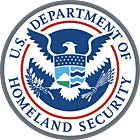Security 500 in Depth: Federal Homeland Security

Securing the U.S. is a monumental challenge. The geography, economy and population create complexities. The objective for security is to “enable” activity in a secure environment. Security as an “obstacle” hinders society’s ability to function.
How big is the job of securing the U.S?
- The U.S. has the third largest population in the world.
- The U.S. is the third largest country by landmass.
- There are over 12,000 miles of coastline.
- Over 6,000 power generating plants.
- 141 million miles of railroad lines.
- Over 5,000 airports with paved runways.
- Over 47,000 shopping centers, visited by over 200 million shoppers, each month.
Among Homeland Security’s greatest security challenges is shipping. Because it is impossible for the government to inspect all of the cargo that enters the U.S., there is the “Safe Shipper Program.” Member companies in this program certify that the items they are shipping are safe and secure. Over 400,000 companies certify their cargo as safe and secure. Nationally, the U.S. government employs 200 federal inspectors to certify cargo safety and security.
Also, since the September 11th incidents, the Department of Homeland Security has spent over $20 billion securing airplanes. Mass transit has received over $500 million. The Port of Los Angeles has received $40 million.
Between the U.S. and Canada lies 4,000 miles of open border. The U.S. has relied on a voluntary video phone system where marine craft stop and notify the Border Patrol that they are entering the U.S. Compliance with this system is not measured and perceived to be low.
Finally, in New Jersey lies a two-mile stretch that may be considered the most dangerous area in the U.S. This area includes: Newark Airport, Port Newark/Port Elizabeth, chemical plants, rail yards and refineries. Richard L. Canas, director, New Jersey Homeland Security, is aggressively working to find the resources and strategy to mitigate risks, according to CNN: Target USA.
Links
Looking for a reprint of this article?
From high-res PDFs to custom plaques, order your copy today!




